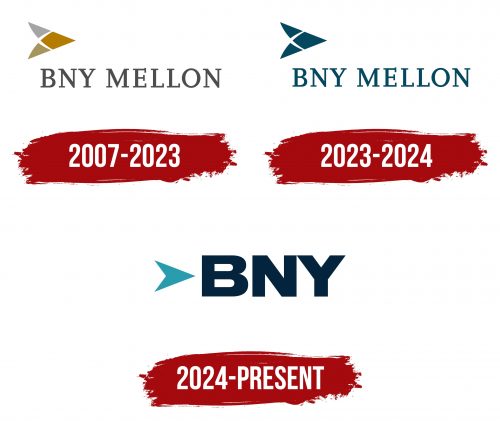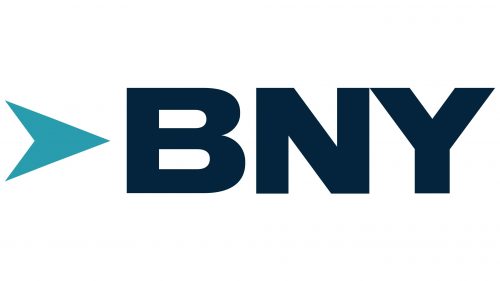 Bank of New York Mellon Logo PNG
Bank of New York Mellon Logo PNG
The Bank of New York Mellon logo is simple and informative, remaining true to traditions. Its minimalist style emphasizes restraint and the absence of unnecessary elements without diminishing its presentability or originality. This perfectly reflects the scale and status of one of the largest banks in the world.
The modern identity is filled with elegance and aristocratic flair, demonstrating informativeness through restrained forms. The logo uses only three typographic marks and one graphic element, creating a powerful impression. The emblem embodies reliability, stability, and the bank’s impeccable reputation. The color accents and clean graphics make it aesthetically appealing and a symbol of stability. Each logo element conveys grace and stillness, which is particularly important for a respected and prestigious institution like the Bank of New York Mellon.
Bank of New York Mellon: Brand overview
One of the founding fathers of the United States, Alexander Hamilton, established the Bank of New York in 1784, marking the beginning of what is now known as Bank of New York Mellon’s history. It was one of the nation’s oldest banks and the first bank in New York. The Bank of New York played a vital role in building the financial infrastructure of the newly formed American state.
Early in its history, the Bank of New York was crucial in funding the nation’s industrial and infrastructure growth. The institution helped fuel economic expansion by financing major projects such as railroads, canals, and other significant endeavors.
During the 19th century, the bank grew and evolved alongside the U.S. economy. In 1822, it became a joint stock company, allowing it to raise additional funds to expand its operations. Despite several economic crises, such as the Civil War and the Panic of 1837, the organization remained stable and maintained its strong reputation.
The institution continued to strengthen its position in the financial sector during the early 20th century. In 1913, it became a U.S. Federal Reserve System member, further solidifying its standing in the national banking system.
Meanwhile, the history of T. Mellon and Sons’ Bank, founded by Thomas Mellon in Pittsburgh in 1869, unfolded alongside the development of New York’s financial institution. T. Mellon and Sons’ Bank quickly became a key player in the local financial market, helping finance Pittsburgh’s growing industrial sector.
In 1902, T. Mellon and Sons’ Bank was renamed Mellon National Bank. Under the leadership of Thomas Mellon’s sons, Andrew and Richard Mellon, the bank greatly expanded and became one of the largest financial institutions in the U.S.
Both financial organizations navigated the ups and downs of the U.S. economy throughout the 20th century. They survived the Great Depression, adapted to post-World War II financial system changes, and contributed to the post-war economic boom.
In the 1980s and 1990s, the two institutions began to focus on asset management and securities services, expanding beyond traditional banking. This allowed them to diversify and strengthen their positions in the evolving financial landscape.
A major turning point came in 2007 when the Bank of New York and Mellon Financial Corporation announced their merger, creating one of the world’s largest asset management and securities servicing companies. The newly formed company was named Bank of New York Mellon Corporation (BNY Mellon).
The merger combined Mellon’s strengths in asset management and services for high-net-worth individuals with the New York institution’s global reach and expertise in securities services.
In the years following the merger, the company focused on integrating the two entities and improving operations. The organization also invested heavily in new technologies to enhance the customer experience and expand its technological capabilities.
The 2008 financial crisis tested the institution and the entire financial sector. Despite the challenges, the company weathered the crisis without significant losses, demonstrating the resilience of its business model.
Throughout the 2010s, the financial giant expanded its global presence by opening new offices and service centers worldwide. It invested in new technologies such as blockchain and artificial intelligence to stay ahead in the financial industry.
In 2015, the company celebrated the 230th anniversary of its founding, reflecting on its long and storied history of resilience and success over more than two centuries.
A leadership change occurred in 2018 when Charles Scharf was appointed CEO. Under his leadership, the organization’s focus and strategy underwent several shifts.
Despite global challenges in 2020 and 2021, the company continued to enhance its services and technological capabilities. New initiatives were launched to improve operations and deliver a better digital experience for clients.
In 2022, the institution continued to invest in cutting-edge technology, including blockchain and digital assets, further advancing its capabilities.
By 2023, the company had become a major player in the global asset management and securities services market, operating in more than 35 countries. It continues to provide services to governments, corporations, financial institutions, and high-net-worth individuals, maintaining its role as a key player in the global financial system.
Throughout its long history, dating back to Alexander Hamilton’s founding, the company has shown its ability to adapt to market changes and technological advancements while remaining a trusted and stable financial partner.
Meaning and History
What is the Bank of New York Mellon?
This financial giant plays a crucial role in managing the global economy behind the scenes. As one of the world’s largest asset management and custody banks, it is responsible for safeguarding and managing trillion dollars in assets for major corporations, institutions, and high-net-worth clients. The bank focuses primarily on investment management, clearing, settlement, and asset custody services. Its influence spans all global financial markets, making it a critical component of the complex international financial system. The institution combines modern financial technologies with a historical legacy that traces back to the early development of the American banking system.
2007 – 2023
The bank’s first logo was an original symbol reflecting the scale and significance of a large financial organization. It was simple, yet the brightness of one element gave it a special charm and individuality. The emblem was presentable and easy to remember, which aligned with the bank’s operations.
The primary background for the logo was white, a popular choice among many companies, as it highlighted key information—letters, signs, and symbols—making them more expressive. The logo was conventionally divided into two parts: the upper and lower sections. In the upper section, on the left, there was an arrow symbol composed of three colors. This element consisted of two triangles and a rhombus, with the sharp side pointing to the right. Gray, gold, and deep orange created a harmonious combination that attracted attention and appeared visually striking. The arrow symbolizes the bank’s focus, confidence in the future, and reliability.
Below the arrow was the bank’s name. The first three capital letters represented the abbreviation “Bank of New York,” followed by the word “Mellon.” All the letters were in the same font and size, creating balance and harmony. The gray color was chosen for the text element, ideal for conveying solidity and stability. Against the white background, the logo was expressive, making the bank’s name easy to read.
2023 – 2024
The identity introduced in 2023 appears somewhat simplified compared to the previous version. The logo retains its main features but has lost the variety of colors and shades present in earlier versions. The new version lacks bright color accents and contrasts, with the color palette becoming more restrained and concise. The white background, which remains unchanged, retains its smoothness and purity, highlighting the elegance of the minimalist approach.
All symbols and text elements are rendered in deep blue tones, reminiscent of the shade of moray eel. This color gives the logo a sense of seriousness and solidity. All letters are large, capitalized, with sharp horizontal serifs, giving them an imposing and solid appearance. They symbolize stability and longevity, emphasizing the power of the financial corporation.
The arrow, an important graphic element, has been reduced in size and now looks more refined. It consists of two parallel triangles and a rhombus, maintaining the traditional symbolism and forward direction but presenting it in a more restrained and minimalist graphic design in the new version.
2024 – today
The modern Bank of New York Mellon logo stands out with its expressiveness despite its simplicity. It is not overloaded with text or graphic elements; its strength lies therein. Simple in color scheme, it does not require excessive visual richness, as it reflects the essence its creators aimed for. Loyalty to tradition is embodied in the depiction of the arrow, symbolizing the rich history of the oldest financial institution. The arrow, however, has lost the complexity of its previous design and is now presented as a single element colored in blue. It confidently points forward, symbolizing a drive for growth and hinting at the potential the bank plans to realize in the future.
The three capital letters of the abbreviation, rendered in bold font and deep blue shade, lend significance to the logo. The sharpness of the lines, the confidence in execution, and adherence to principles showcase the bank’s reliability, maintaining its reputation on the global stage. This minimalist yet powerful logo underscores the impeccable status of the Bank of New York Mellon and its undeniable leadership in the financial world.






